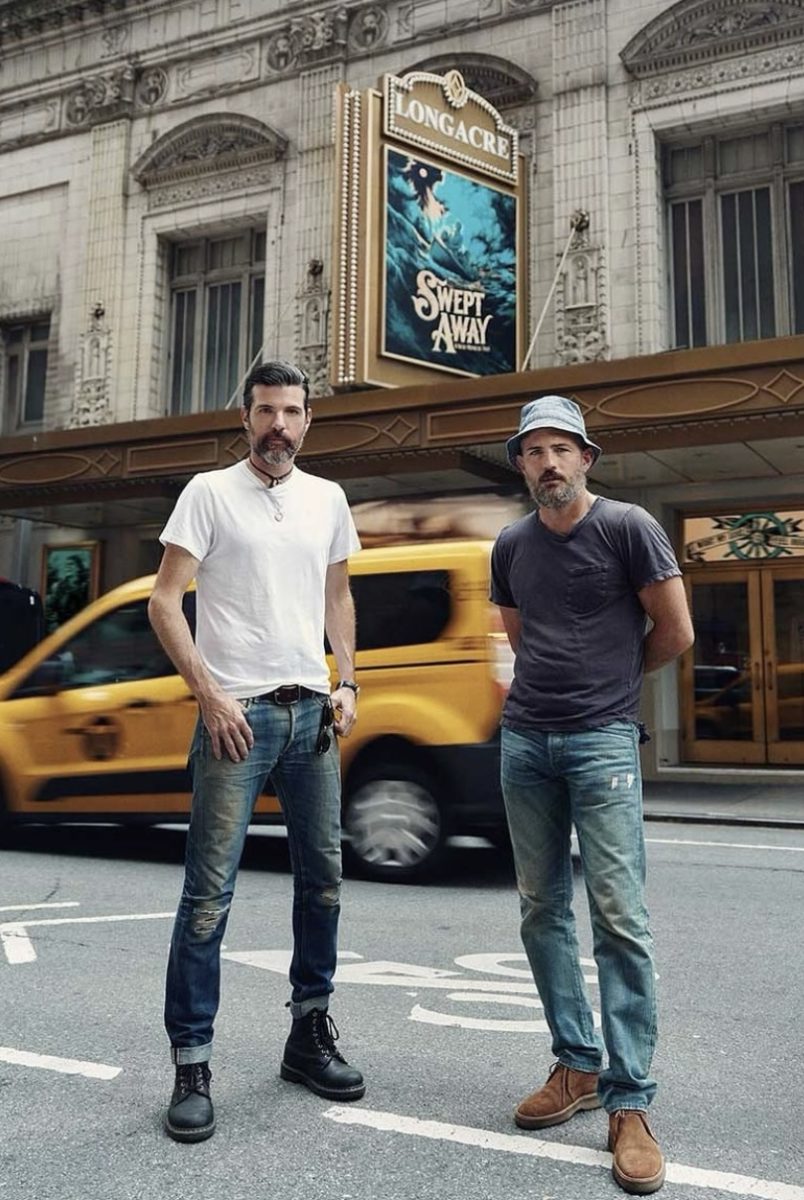I’ve seen a lot of theater, and something I’ve learned throughout my years as an audience member is how difficult it is to create a show that is concise and moving, while still incorporating new creative elements and ideas. Many shows struggle to articulate their message in the right amount of time and end up adding filler moments that don’t add to the message.
Broadway’s new musical “Swept Away,” however, achieves depth and emotion admirably in a brief 90 minutes. For a show that is advertised on a very surface level, mainly showing the sailors and ship, and the jukebox nature of the production, “Swept Away” was pleasantly surprising, and shockingly thought-provoking.
The show follows four men on their travels onboard a ship including two brothers, deemed “Big Brother” and “Little Brother,” played by Stark Sands and Adrian Blake Enscoe, respectively, as well as their “Mate” (John Gallagher Jr.) and “Captain” (Wayne Duvall). It is a show about “shipwreck, salvation, and brotherhood,” as it is marketed, and utilizes the folk-rock songs of the Avett Brothers to tell the tale. Going into the production, I was hesitant due to the jukebox nature, as well as my limited knowledge of the variety within the Avett Brothers’ catalog, but I came out shocked due to the way the music worked within the story to cause it to flow perfectly.
The show incorporates songs that are both upbeat and uplifting, as well as tragic and down, and reaches to all corners of the folk-rock genre to tell the tale. No two songs were alike within the story, and the reprises of many songs brought back important motifs that really tied everything together nicely. Stand out numbers included “Hard Worker,” a dance number featuring the sailors, “Murder in the City,” a song encapsulating an emotional and powerful moment between the brothers, and the title track “Swept Away.” The show succeeded in incorporating upbeat dance numbers with more acoustic and emotional moments, and the songs felt the right length. The melodies also will very easily get stuck in the heads of the audience, and I have found myself humming them countless times since I saw the show on Nov. 4.
The themes in the show are applicable to wide audiences, as it focuses on the importance of family and helping one another. Being able to see loads of siblings around me in the audience relating to the brotherhood in the show was moving and I was pleasantly surprised by the amount of people who seemed to really connect with the show. It does have quite a few religious undertones, which is the only element I found wasn’t entirely relatable to all people, but even if they aren’t ideas one agrees with, the show was incredibly easy to relate to and enjoy regardless.
Featuring an entirely male cast, the show highlighted four key performers. Enscoe, making his Broadway debut in this production as Little Brother, articulating the naivety and innocence of our youth, and also allowing the audience to feel for the characters as hardship strikes. Sands, a Broadway veteran, complements the character of Big Brother beautifully and through his powerful vocals emphasizes the lengths to which siblings will go to protect each other. Gallagher’s character of Mate is multifaceted and allows insight into why people do the things they do, and how they go on to live with the consequences. Mate incites a lot of hatred in the viewer, but also a lot of empathy, which is hard to achieve. Duvall’s performance as the Captain provides a voice of reason and a rock for the other characters to lean on. The four complement each other and are not repetitive although they all portray sailors, adding another level of depth to the story. The ensemble supports them to create an exceptional message and image.
Director Michael Mayer and playwright John Logan’s work come together to create an incredible vision, allowing everyone on stage to shine in the roles and giving the show a message without feeling cringeworthy or cliché. However, the main standout of the production and creative side of the work is in Rachel Hauck’s set design and Kevin Adams’ lighting. I have never before been so surprised by the design of a show, and the set design left me shocked. The ship on stage moves like a boat would, and it really transports the viewer into the world. When the stage transitions it is incredible to see, and many in the audience seemed shocked by how a stage can transition so much within just a few minutes. The lighting was also very well done, and the use of overhead lights, versus spotlights, versus the small hanging bulbs that are used in some scenes really worked well to emphasize what the scene was going for. The way that the living were spotlighted in a different way than the dead conveyed without words what was going on, and more than anything I found myself pondering the show’s creative choices upon leaving the theater.
Overall, “Swept Away” is a show that any theatergoer, folk-rock enjoyer or sibling would enjoy and resonate with, and is a very well done production that is something that I think about even days later. The vibrant energy that the actors bring to tragic tales emphasized why I love theater and live performance, and the tale shocked me in the best of ways.





































































































































































































